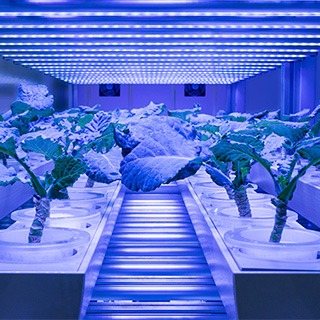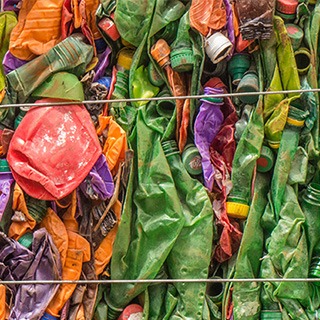Overview
The Circular Economy Centre’s research focuses on circular economy, circular business models and their application, as well as the policy and business contexts within which they operate.
In line with the research strategy of Cambridge Judge Business School, we promote and use deep engagement to further our aims with regard to knowledge sharing around building a sustainable economy. This includes interacting with international organisations and enterprises, and helping them to address potential management challenges.
Access research publications, reports and books from faculty and associates from the Circular Economy Centre at Cambridge Judge.

Watch the video from the special edition on circular economy research for the Californian Management Review, guest-edited by Circular Economy Centre faculty.
Research projects
How do we transfer the circular economy model into real-life use? Find out about the projects applying the circular economy model into real-life use in the likes of defence, as well as IoT.
Circular and plastics
CEC is part of a consortium at the University of Cambridge that was awarded more than £1 million funding by the UK Research and Innovation agency to respond to challenges posed by plastic waste.
Circular and IoT
CEC is cooperating with European academic institutions and practitioners to develop an innovative framework of interplay between circular economy and IoT, to explore novel ways in which this interaction can drastically change the nature of products, services, business models and ecosystems.
Circular and defence
In 2017, CEC undertook the seminal project on circularity in defence in collaboration with the European Defence Agency. The project was completed in November 2017 identifying a number of areas that are potential opportunities for applications of circular economy in defence in the near future.
Research themes
Discover the centre’s key research themes of publications that explore the transfer of circular economy models in the future of technology, agriculture, waste and more.

Circular and special
CEC faculty are often amongst the most cited thought leaders in the circular economy sphere and regularly publish in journals such as Harvard Business Review, Thunderbird, California Management Review and Stanford Social Innovation Review. Most recently Director Khal Soufani and 2 Fellows of the Circular Economy Centre at Cambridge Judge were guest editors of a new special issue of the California Management Review on the circular economy.
The special 180-page issue of the publication includes eight articles on such topics as 3D printing and the circular economy, transforming Chinese industrial parks into eco-industrial parks, and shareholder views on the circular economy. This special issue also includes video, and blogs by the CEC team as well as other academics from across the globe.
In a circular economy, materials are reused as much as possible. And new business models can promote resource efficiency by maximizing the value of what we already produce.
There are 5 major characteristics of a circular economy:
1. Circular supply chain: All products should be designed to use fully recyclable or biodegradable materials.
2. Recovery and recycling: All waste byproducts should be optimised for revenue potential.
3. Build products to last: Discourage replacement of products by using durable materials, and offering to refurbish, refill, or repair.
4. Sharing platform: Let multiple customers use the same resources. Most cars sit idle for 92% of the time. Ride sharing is more efficient than individual ownership.
5. Product-as-a-Service model: Companies can be incentivised to consider longer product lifecycles by leasing products, instead of selling them. Michelin now sells tires as a service, where customers pay by miles driven.
Based on the article “Introducing a Circular Economy: New Thinking with New Managerial and Policy Implications” by Mark Esposito, Terence Tse, and Khaled Soufani.
Most companies want to operate sustainably, but they often don’t know how to integrate sustainability goals into their business models.
The circular economy model provides new options that can radically reduce the wastefulness of our current “throughput” economy.
One of those options is 3D printing, which has the potential to become the new manufacturing infrastructure for a sustainable circular economy. Why? Because it closely resembles the manufacturing process that nature itself uses to create all living things.
Based on the article “Circular Economy, 3D Printing, and the Biosphere Rules” by Gregory Unruh.

Circular technology and agriculture
It is an urgent prerogative to find alternative farming solutions that will effectively address food scarcity, security and price increases. The Circular Economy Centre explores the alternative solution of vertical farming in controlled containers.
‘Vertical farming’ can help address food security issues, says new article in Stanford Social Innovation Review authored by Cambridge Judge academics.
CE-IoT is a EU H2020 project funded by the Marie Skłodowska-Curie RISE action. The overall aim of CE-IoT is to develop an innovative framework of interplay between circular economy and IoT. CE-IoT has a budget of 1,692,000€ and a duration of four years, from July 2018 to July 2022.

Circular and waste
New business models in the circular economy promise to help change the trajectory of food waste, but more still needs to be done. Standardising rules for “best by” dates and breaking down perceptions that quality and taste is dependent on cosmetic appearance are some of the next challenges to a circular economy in food waste that business owners, managers, innovators, environmentalists, and entrepreneurs alike will face in the coming years.
But food waste is not the limit – circularity is about reverse logistics, which includes asset tracking, materials recovery, dismantling, and toxic waste handling.
Better collaboration with farmers, processors and consumers could help retailers reduce the huge amount of wasted food, says Harvard Business Review article by three Cambridge Judge academics.




